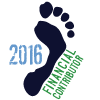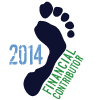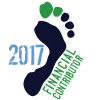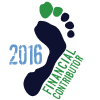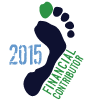That sounds very similar to how the folks in the Burfoot article describe 'the lean.'The lean is something that is there but not something I would say I try to force but rather allow my body to move/pivot over and past my feet at my desired speed.
You are using an out of date browser. It may not display this or other websites correctly.
You should upgrade or use an alternative browser.
You should upgrade or use an alternative browser.
Don't shorten your stride!
- Thread starter Barefoot Gentile
- Start date
Nick, gravity acts on the center of gravity. If you lean, your center of gravity moves forward, you become unbalanced, you head rotates towards the ground and your feet away from it. If you were to let yourself fall freely, your feet would leave the ground at some point during the fall. But when you hold a 25-pound weight out in front of you, your center of gravity does indeed move forward some, which causes the trunk and legs to counterbalance, which is a kind of stress, but I think the stresses you're referring to are mainly from maintaining weight on an extended limb that is not designed to support that kind of weight so far out.I must not have explained myself very well B&A. Let me try again. When you lean farther forward you do actually increase more gravity stresses on your body. Think of holding a 25 lb weight close to your body, now straighten out your arms and that weight now seems much heavier and increases the stresses on your body. Same principle with body lean. The farther you get out from center of gravity, the more stresses you incur to your body. Hope I explained myself well enough this time.
It figures we'd have different tastes!Barelee,
I agreed but I prefer jack and coke over a beer.
NickW
Guest
Uh, what?Based on my lay understanding of physics / biomechanics, that is correct, and the Pose model doesn't make sense to me. The reason I don't offer my own critique of Pose is because others much more qualified than I am already have. I'm just a simple country linguistic anthropologist. No need to rehearse these arguments here.
I don't doubt that you get good results coaching with the Pose method (you certainly are passionate about your metier!). What I would suggest is that you are using a 'folk' model that offers valuable cues to achieving good form for your clients/students. As we know, folk models can work quite well on a practical level. Even Newtonian physics has become something of a folk model insofar as quantum mechanics offers a truer model of reality. Nonetheless, Newtonian physics is still perfectly adequate for building bridges. It's just that it fails in explaining adequately 'what's really going on' on a deeper level. Likewise, looking at the position of the sun still works for fairly accurate time-reckoning, but we know for a fact that the earth is the one changing its position throughout the day, not the sun.
My evolving understanding of running/biomechanics is that 'good form' exists, yes, but there's a certain amount of variation within that, and that different coaches use different cues with different students to achieve that form. The danger is in confusing these cues or models with 'what's really going on,' confusing practical results for theoretical understanding.
For example, experimental results show that the return phase of the gait cycle is mainly reflexive. That means there's little need to pull our legs or drive our knees. Yet the 'leg pull' or 'knee drive' cue or image may lead to better form with some students, as they may cause other things to happen, like a faster cadence or better placement of foot landing, that are beneficial. Likewise, in boxing, it might be useful to think of the torso as launching the fist, in order to relax the upper body and arm and let the power generated by the knees and hips be conducted to the fist efficiently. But of course, you aren't actually launching the fist.
At this point we buy another round of beer and change the topic.
In the end, it's the beer that counts.Uh, what?This is so above my level of understanding... I'll take you up on the beer though!

My evolving understanding of running/biomechanics is that 'good form' exists, yes, but there's a certain amount of variation within that, and that different coaches use different cues with different students to achieve that form. The danger is in confusing these cues or models with 'what's really going on,' confusing practical results for theoretical understanding.
This is a profound statement.
In my experiences, bridging the gap between the collective "this is what good form look like" and allowing individuals to tweak every detail to maximize efficiency based on their own particular biomechanics is the most difficult part of teaching form. Ken Bob has it right when he says our own two feet are our best coaches, though I would say the rest of our body is important, too.
I found the best teaching strategy is to teach the very basics of better form (posture, foot landing, and cadence/stride length), then teach methods to self-analyze and correct your own gait. Since all of us have a slightly different peak metabolically-efficient gait (term borrowed from the podiatrists), a coach isn't nearly as valuable as self-awareness. The best coaches don't teach good form. The best coaches teach how to teach yourself good form.
Lawrence Smith
Barefooters
I just added a couple of paragraphs to the page that the O.P. referenced:
http://www.alexandertechnique-running.com/?page_id=395
What is added is this:
An evident physiognomic difference between terrestrial man and his arboreal ancestors is limb length. Apes have longer arms – better for moving in the trees – man has longer legs – better for running. Man has evolved long legs in relation to the size and power of the gluteus muscles and their ability to fully extend those limbs in locomotion. If high-cadence, short-stride running were really more efficient, the evolutionary process would not have resulted in lean, long-limbed runners, and dachshunds would be better runners than are greyhounds.
The reason that some studies show increased efficiency in some runners through shortening of stride is because the runners studied have postural faults that make full extension effortful. The general postural condition of modern man is one of global retraction. We hunch over our desks, we slouch in our chairs, we slump while standing. We run with our heads retracted, with our shoulders lifted, with our hands balled into fists, and, yes, with short strides. To attempt to correct this retraction with increased effort takes more energy. To force oneself to stand and sit “straight” doesn’t work. We need to learn to take the effort out of posture, to undo the retraction. Then a longer running stride will be able to do itself.
The Alexander Technique is a method that addresses posture.
http://www.alexandertechnique-running.com/?page_id=395
What is added is this:
An evident physiognomic difference between terrestrial man and his arboreal ancestors is limb length. Apes have longer arms – better for moving in the trees – man has longer legs – better for running. Man has evolved long legs in relation to the size and power of the gluteus muscles and their ability to fully extend those limbs in locomotion. If high-cadence, short-stride running were really more efficient, the evolutionary process would not have resulted in lean, long-limbed runners, and dachshunds would be better runners than are greyhounds.
The reason that some studies show increased efficiency in some runners through shortening of stride is because the runners studied have postural faults that make full extension effortful. The general postural condition of modern man is one of global retraction. We hunch over our desks, we slouch in our chairs, we slump while standing. We run with our heads retracted, with our shoulders lifted, with our hands balled into fists, and, yes, with short strides. To attempt to correct this retraction with increased effort takes more energy. To force oneself to stand and sit “straight” doesn’t work. We need to learn to take the effort out of posture, to undo the retraction. Then a longer running stride will be able to do itself.
The Alexander Technique is a method that addresses posture.
This is a really great thread with lots of good info to think about. Thank you!
Speaking for myself only, I've found that after regaining about 20+ lbs that a shorter stride length was more manageable. As I'm losing weight again, I expect the stride length to stretch out again. Looking at Dr. Mark's video, it's no surprise that he strides like a race horse. As for right now, I feel more like a draft horse at times.
Longer legged people may feel more comfortable with longer strides. I would guess that total body weight and overall conditioning have something to do with it as well.
Speaking for myself only, I've found that after regaining about 20+ lbs that a shorter stride length was more manageable. As I'm losing weight again, I expect the stride length to stretch out again. Looking at Dr. Mark's video, it's no surprise that he strides like a race horse. As for right now, I feel more like a draft horse at times.
The more I barefoot run the more I realise that after forefoot striking, stride length and cadence are next things to focus on. See Cadence, the next most important aspect of barefoot running.
Per this article:
I read through this and Jason's blog post as well. I am slightly confused by something. In Jason's post he mentions your MEG (Maximal Efficiency Gait) I understand that there is a certain stride length that is optimal, and it varies per runner, does this change in respect to the cadence? I loaded up a youtube video of Jason running:
I noticed that his stride length was pretty dead on for two different paces (10-12 minute, and 8-10 minutes) but when he went to 6-8 minute pace his stride lengthened considerably. Do we reach a point where cadence is simply not enough and stride length needs to be lengthened in order to gain speed? In these cases do we just accept the fact that we are not running with the most efficient stride length, or IS the most efficient stride length a longer one?
The more I barefoot run the more I realise that after forefoot striking, stride length and cadence are next things to focus on. See Cadence, the next most important aspect of barefoot running.
I read through this and Jason's blog post as well. I am slightly confused by something. In Jason's post he mentions your MEG (Maximal Efficiency Gait) I understand that there is a certain stride length that is optimal, and it varies per runner, does this change in respect to the cadence? I loaded up a youtube video of Jason running:
I noticed that his stride length was pretty dead on for two different paces (10-12 minute, and 8-10 minutes) but when he went to 6-8 minute pace his stride lengthened considerably. Do we reach a point where cadence is simply not enough and stride length needs to be lengthened in order to gain speed? In these cases do we just accept the fact that we are not running with the most efficient stride length, or IS the most efficient stride length a longer one?
With cadence staying the same the stride length varies depending on speed. When I speed up, my cadence stays at about 180 but my stride length changes. Some people keep their stride length and pick up their cadence. I personally have more joint discomfort with a shorter stride as the alignment of my posture changes with the feet being more directly under me. Again it is all about the journey of discovery, what works for one might not for somebody else. But Jason looks awesome at any speed.
Thanks Dutchie. 
In general, my cadence doesn't change much. Other people, like Dutchie said, increase cadence and keep stride length the same. Still others use some combination of the two. It's just a matter of figuring out what works best for you.
In general, my cadence doesn't change much. Other people, like Dutchie said, increase cadence and keep stride length the same. Still others use some combination of the two. It's just a matter of figuring out what works best for you.
Of course Jason is HOT no matter what pace..lol.
Mark, In my experience and opinion stride length and range of motion should fluctuate depending upon speed of the velocity of the moving body not because of the cadence of our legs. Using this as ones guide their cadence will stay roughly the same throughout a large speed spectrum from around 16 minutes pace per mile down to around 5 minute pace per mile. If/when cadence stays the same range of motion and stride length will be less and shorter at slower speeds and increase and stretch further as speed increases. Only when our bodies reach a top sprint speed does the need for cadence to increase beyond and higher due to our range of motion of our legs reaching maximum stretch/flexing ability. Does that make more sense to you? This is my experience and professional opinion as a coach of running technique.
Mark, In my experience and opinion stride length and range of motion should fluctuate depending upon speed of the velocity of the moving body not because of the cadence of our legs. Using this as ones guide their cadence will stay roughly the same throughout a large speed spectrum from around 16 minutes pace per mile down to around 5 minute pace per mile. If/when cadence stays the same range of motion and stride length will be less and shorter at slower speeds and increase and stretch further as speed increases. Only when our bodies reach a top sprint speed does the need for cadence to increase beyond and higher due to our range of motion of our legs reaching maximum stretch/flexing ability. Does that make more sense to you? This is my experience and professional opinion as a coach of running technique.
Flexibility of a person has a lot of influence of how one runs, and how to approach their running as to stride length. As I got older my stride length got shorter. Oh boy, to be young again.Of course Jason is HOT no matter what pace..lol.
Mark, In my experience and opinion stride length and range of motion should fluctuate depending upon speed of the velocity of the moving body not because of the cadence of our legs. Using this as ones guide their cadence will stay roughly the same throughout a large speed spectrum from around 16 minutes pace per mile down to around 5 minute pace per mile. Only when our bodies reach a top sprint speed does the need for cadence to increase beyond and higher due to our range of motion of our legs reaching maximum stretch/flexing ability. Does that make more sense to you?
Flexibility of a person has a lot of influence of how one runs, and how to approach their running as to stride length. As I got older my stride length got shorter. Oh boy, to be young again.
Sounds like you need to add some yoga to your lifestyle
My daughter said the same thing. Lol. She want me to join her in hot yoga, actually thinking about it.
Smart girl. Go for it
Forum statistics
Latest posts
-
Chiang Mai running sandals made from car tire rubber gain popularity
- Latest: Barefoot TJ
-
Get Your 2024 Wildwood Barefoot Country Music Fest Tickets Here
- Latest: Barefoot TJ
-
-




















